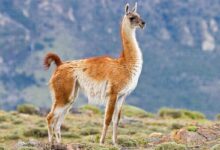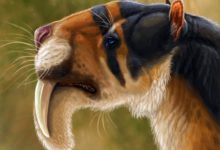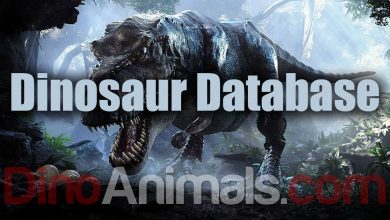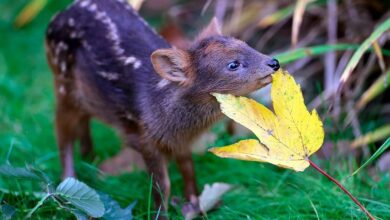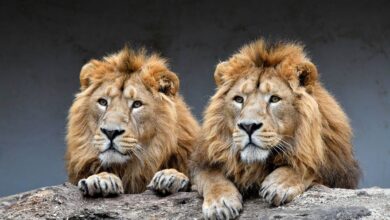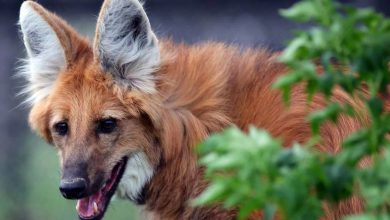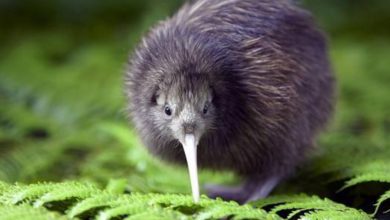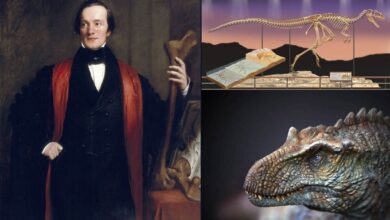Megatherium americanum – giant ground sloth
Megatherium – a great beast
The word “beast” in the dictionary means “wild, menacing animal.” So does the term really fit the giant sloth? Was he, like predatory mammals, a formidable and unpredictable animal? There are many indications that not. Although it probably did not classify itself as a quick and ruthless killer, it was impressive with a size that would match today’s African elephants. Here is the great beast of South America and one of the largest mammals in the history of the Earth – the Megatherium.
Classification
- Kingdom: Animalia
- Phylum: Chordata
- Class: Mammalia
- Order: Pilosa
- Family: †Megatheriidae
- Subtribe: †Megatheriina
- Genus: †Megatherium
- Species:
- †Megatherium americanum
- †Megatherium altiplanicum
- †Megatherium gallardoi
- †Megatherium istilarti
- †Megatherium medinae
- †Megatherium parodii
- †Megatherium sundti
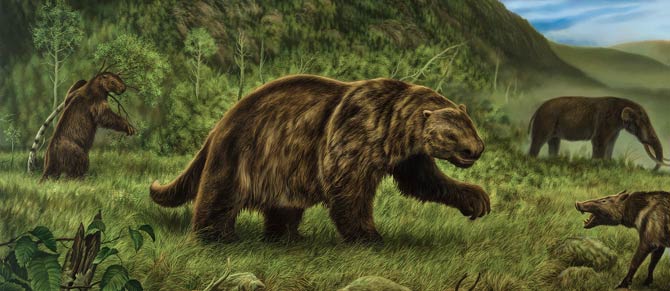
Occurrence and dating
It is considered an endemic species to South America during the Pleistocene epoch. He stayed in forests and in the open areas of the continent from about 5.3 million to 10 thousand years ago. It probably also chose dry and semi-arid areas for its habitats.
Characteristic
Appearance
The Megatherium sloths were one of the largest land mammals that ever existed on Earth. They weighed about 2-4 tons, and the length of the body with the tail was up to 6 meters (20 ft). Thus, they were very similar in size to modern elephants, thus outgrowing some mammoth species.
The largest representatives of the genus were sloths of the species Megatherium americanum. Thanks to this, they belong to the Pleistocene megafauna of South America.
This terrestrial mammal had a heavy and massive skeleton, wide pelvic bones and large caudal muscles. Thanks to its enormous size, it could reach tall trees and eat their leaves – much like modern giraffes. It didn’t have to worry about competition in that regard -no other herbivore could reach where the Megatherium did. During feeding, the sloth stood on two hind legs, additionally supported by a strong tail that acts as a stabilizer. In this position, it could eat the leaves from the trees, bending the branches with its front paws with 30 cm claws.
However, crossing the Pleistocene meadows, it moved on 4 limbs. Like today’s anteaters, he walked on the backs of his forepaws because his claws prevented him from placing his entire foot flat on the ground. Although he moved mainly on four legs, he occasionally walked on only two – fossil evidence and skeletal analyses indicate this.
It is not known exactly how the skull of the Megatherium was built. According to one theory, its jaws were so large that they could accommodate a very long tongue adapted to grasp leaves. This would show a great resemblance to the modern tree sloths. However, many question this theory. Several elements of the jaw of the Megatherium indicate that the mammal would not be able to stretch its tongue in the way its modern relatives do. Scientists agree, however, that the jaws were covered with narrow, catchy lips, capable of tearing off individual leaves and twigs.
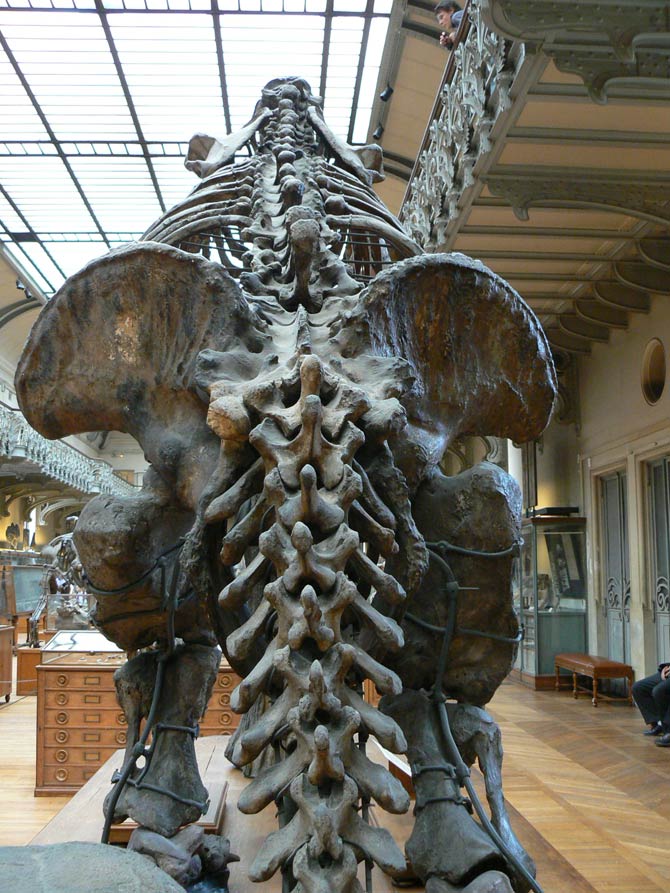
Diet
Certainly, the huge size and skills had a great influence on the survival of the Megatherium until the Pleistocene and reaching the territories of North America. Standing on two legs, it reached the higher parts of the trees, which allowed for effective competition with smaller herbivores.
However, he was not condemned to foraging only above the ground. With its strong claws, it would be able to dig out, for example, the roots of plants, and its strong teeth and hard jaws suggest that it was able to shred and cut hard plants and stalks that were difficult to digest. This means that the Megatherium was adapted to digesting various types of vegetation.
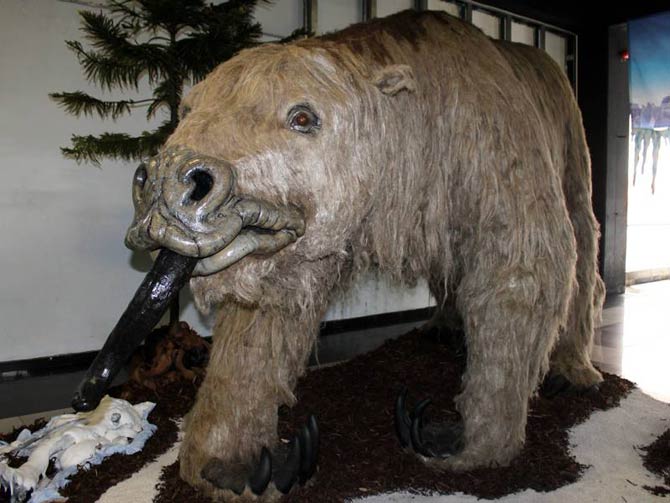
A carnivorous sloth?
However, some have gone much further in their thoughts. There is a theory according to which the Megatherium also ate meat. This animal could be both a scavenger and an active hunter killing its prey (mainly predators that wanted to hunt it).
Scientists do not rule out that the Megatherium, like other huge ground sloths, supplemented its diet with animal protein to provide nutrients that plants simply lack. However, it seems that scavenging rather than aggressive predation is more “fitting” for an animal of the Megatherium genus.
The sloth’s greatest weapon was probably its enormous size, which effectively hindered attacks from predators much smaller than it. So far, all the evidence found about the life of the Megatherium indicates that it had an exclusively or mainly plant-based diet. Nevertheless, several BBC productions portray the Megatherium as an omnivorous animal.
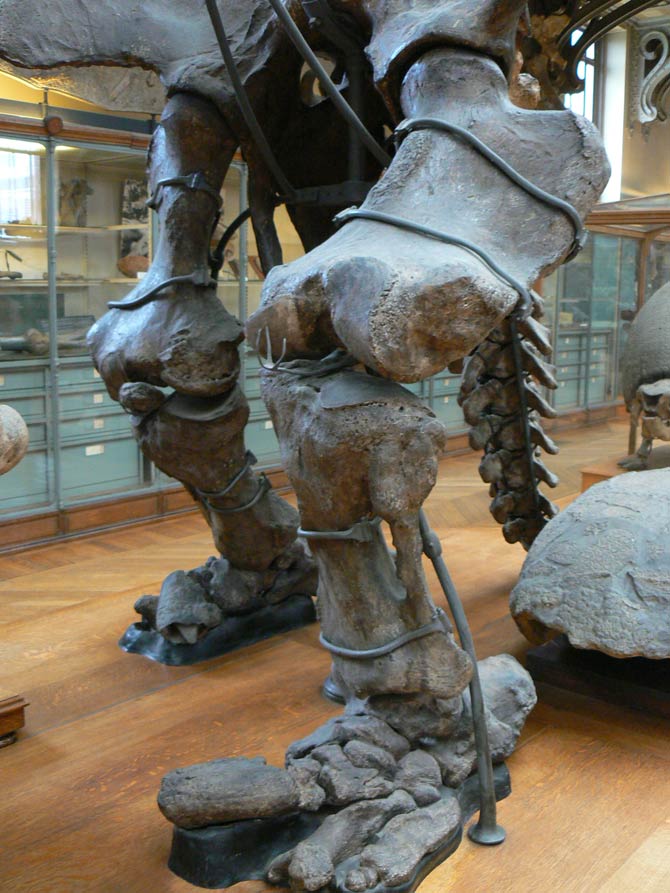
The causes of Megatherium’s extinction
Human interference (hunting) is cited as the main reason for the extinction of the great sloths. It is possible that these animals became easy prey for humans because, like their modern relatives, they could only move very slowly. In addition, during the Holocene, as a result of climate change, the ideal habitats for the Megatherium also began to shrink, which to some extent contributed to the reduction of the population.
The genus is officially believed to have died out about 10,000 years ago, but there are several mentions suggesting it survived up to 8,000-7,000 years ago.

Detailed data / dimensions (size)
Megatherium
- Length from head to tail: 6 m (20 ft)
- Height on 2 legs: up to 6 m (20 ft)
- Claws length: 30 cm (12 in)
- Weight: 2-4 tons (4,400 – 8,800 lb)
- Extinction: 5,370 B.C.E.
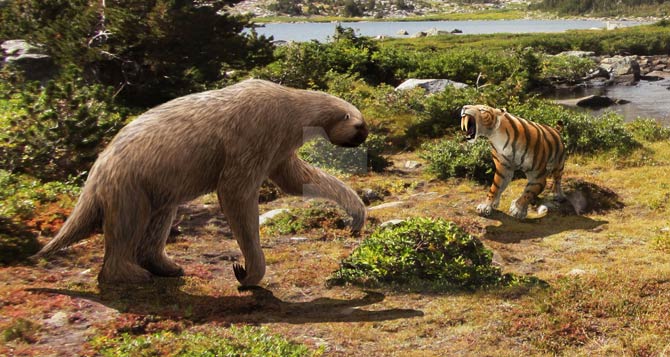
Megatherium – interesting facts
- The scientific name comes from the Greek language and means “great beast”.
- Megatherium is the largest ground sloth known to us.
- If we ignore the thick coat of the Megatherium and only focus on its anatomy, we can see that it has a lot in common with dinosaurs, such as the huge Therizinosaurus. The greatest resemblance is seen in the long, curved claws. The Megatherium can therefore be an example of convergent evolution between dinosaurs and mammals.
- The Megatherium was one of the slowest animals in its ecosystem.
- Another huge sloth was closely related to Megatherium – Eremotherium. Eremotherium belonged to the same family and genus, but was a separate species.
- The theory that saber-toothed tigers hunted Megatherium is often questioned due to the size of these mammals. Nevertheless, it cannot be ruled out that young, weak and sick individuals fell victim to these big cats.
- It is uncertain whether the Megatherium was a loner or a herd animal.
- The Megatherium over millions of years has had no enemies that could threaten it.

Recommended
- Mass extinctions of species – the „Big Five”
- History of animals and plants extinction
- Extinction of dinosaurs. Why are they extinct?
- The longest dinosaurs. Sauropods Top 10
- The heaviest dinosaurs – Top 10
- The longest predatory dinosaurs. Theropods Top 10
- The heaviest predatory dinosaurs Top 10
- The longest Ornithischians (Ornithischia) TOP 10
- The heaviest Ornithischians Top 10
- The largest raptors (dromaeosaurs) Top 10
- The heaviest Dromaeosaurids / dromaeosaurs – Top 10
- The longest Ankylosaurus Top 10
- The heaviest Ankylosaurus Top 10
- The longest ceratopsians
- The heaviest ceratopsians
- The longest and largest ornithopods
- The heaviest ornithopods Top 10
- The longest Stegosaurians (Stegosauria) TOP 10
- The heaviest Stegosaurians (Stegosauria) Top 10
- The smallest sauropods Top 10
- The smallest dinosaurs Top 10
- The largest pterosaurs Top 10
- Dinosaurs
- Dinosaurs database
- Predatory dinosaurs
- Animals & dinosaurs records
- The fastest animals – Top 100
- The fastest birds – Top 10


